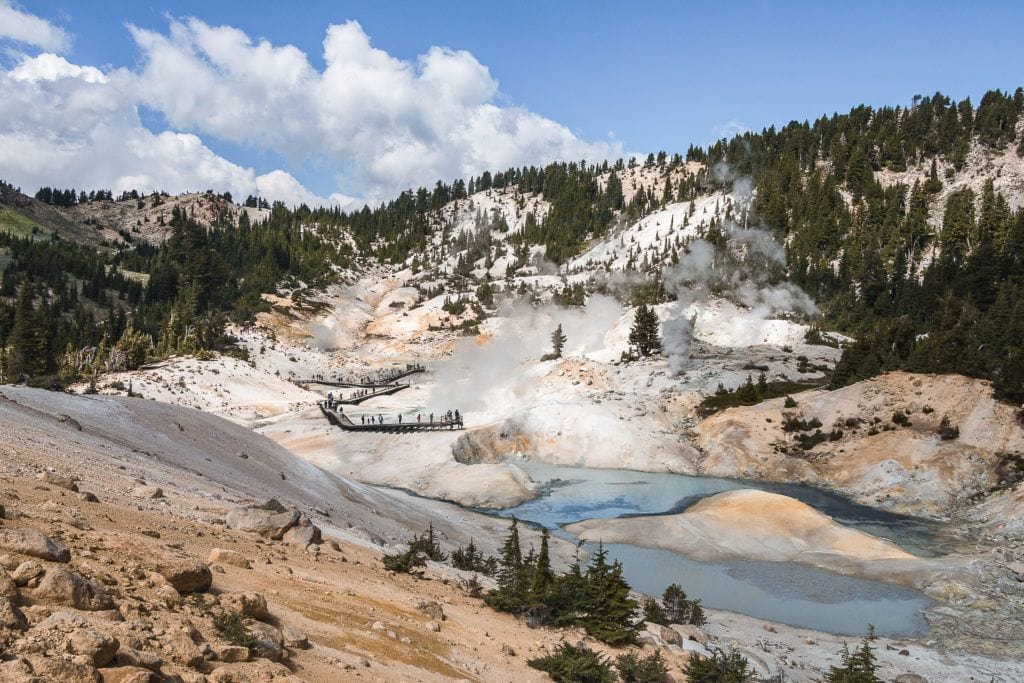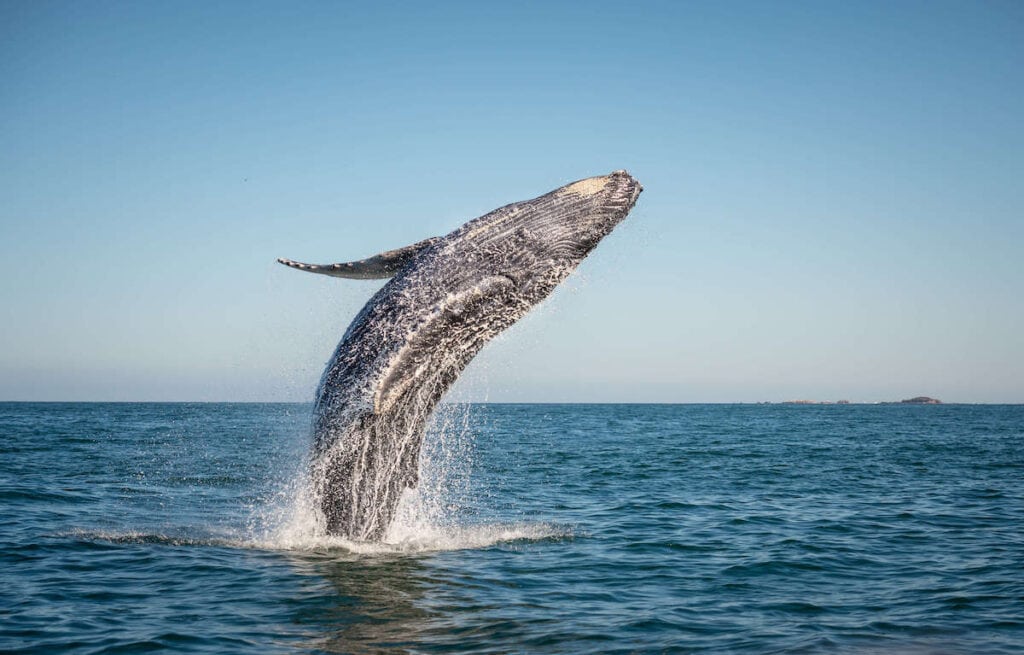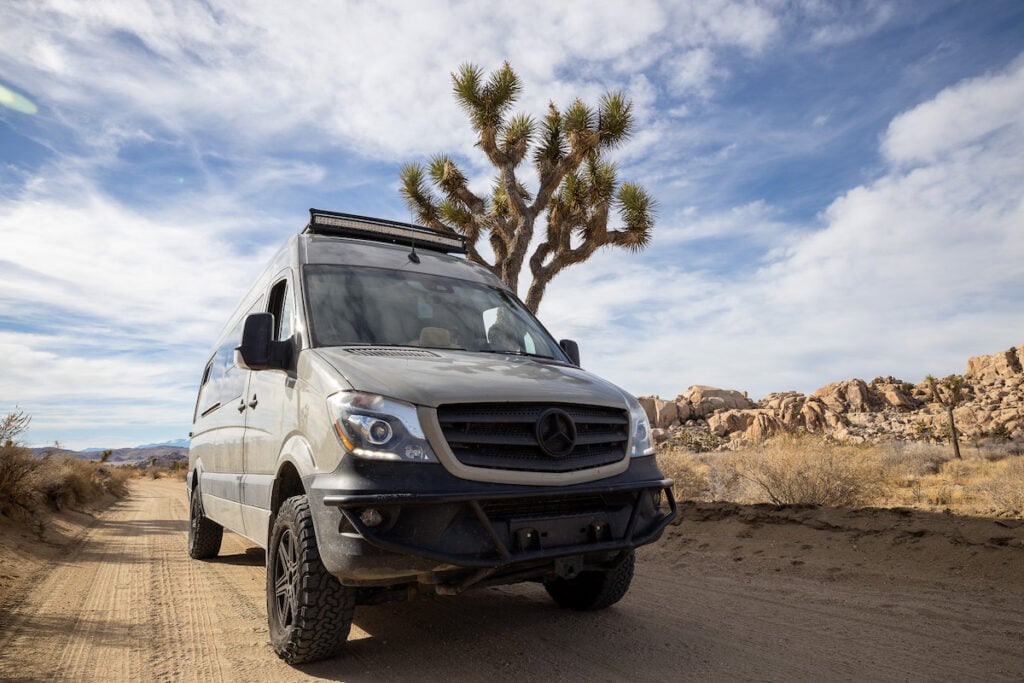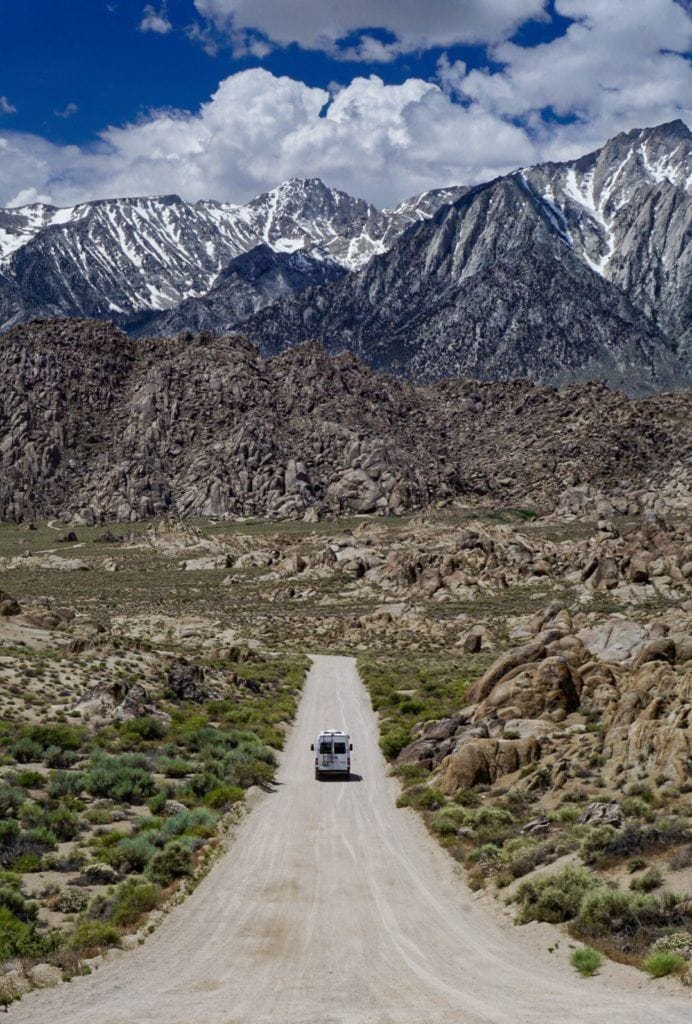I’ve lived in a number of towns in California, including Los Angeles, San Diego, Santa Barbara, and San Francisco, and have been fortunate enough to travel all over the state. From the ocean views and green, rolling hills of Big Sur to the arid, otherworldly terrain of Death Valley National Park, I never ran out of places that I wanted to see and explore.
One of the coolest things about California – at least I think so – is that there are so many different ecosystems. California is home to beaches and rugged coastline, 14,000-foot peaks, sandy deserts, and dense forests (not to mention 9 National Parks). I could be enjoying an alpine lake in the morning and listening to the waves crash onshore in the afternoon. There aren’t many places in the world with that much diversity when it comes to outdoor recreation.
But with so much to offer, how do you choose where to go and what to see? In this post, I share my favorite places to visit in California for those who want to get outside and explore the Golden State. Need more ideas? You can check out all of my California travel blogs here.

This post may contain affiliate links.
Northern California
Northern California is known for its dramatic coastlines, Redwood forests, and geothermal activity, and being so far from major cities, it sees fewer visitors than other parts of the state.
1. Point Reyes National Seashore
Point Reyes National Seashore is located on the northern California Coast less than 2 hours from San Francisco. It’s one of the best places in the state to view coastal wildlife like elephant seals, tule elk, tons of bird species, and even whales. Peak grey whale season is January through April, and when I visited, I saw several blows off-shore.
The landscapes at Point Reyes are just as worthwhile. There are rugged cliffs, long sandy beaches, rolling grasslands, and lush forests crisscrossed with hiking trails. A lot of people don’t realize that California has such undeveloped places like this!
Here are some fun things to do in Point Reyes:
Van and car camping near Point Reyes is pretty limited unfortunately, so you if you are hoping to camp with your vehicle, you should have an idea beforehand of where you plan to stay. We didn’t plan ahead and had a difficult time finding anywhere to park overnight.

2. Humboldt Redwoods State Park
A trip to California wouldn’t be complete without spending time among the majestic Redwood trees. There are several places along the northern California coast where you can view old-growth redwood forests, but my favorite is Humboldt Redwoods State Park.
The 31-mile drive along the Avenue of the Giants is spectacular and there are tons of quiet hiking trails where you can get up close to these giants. I also recommend packing a swimsuit and taking a drip in the brisk Eel River. If you want to spend the night, Humboldt has a great campground under the canopy of the Redwoods (reservations highly recommended!).

Want to see more redwoods?
Humboldt Redwoods State Park isn’t the only place you can see the redwoods. Some other places worth visiting are Jedediah Smith Redwoods State Park, Prairie Creek Redwoods State Park, Elk Prairie, and Redwood National Park.
3. Lassen Volcanic National Park
Rich in hydrothermal sites including roaring fumaroles (steam and volcanic-gas vents), bubbling mud pots, boiling pools, and steaming ground, you can get up close to volcanism in action in Lassen National Park.
Two places not to miss in the Park are Bumpass Hell and Sulphur Works. Once you’ve visited the hydrothermal sites, Lassen Volcanic National Park is also home to a number of coldwater lakes for swimming or paddleboarding, many trails for day hiking, and opportunities for backpacking.
For the best view in the Park, you can hike to the top of Lassen Peak. Unfortunately when I was in Lassen, a wildfire broke out and the sky was very smoky the day we planned to hike this trail, so we skipped it. But it’s on my list for next time.
If you have extra time, we took a day trip to Burney Falls and found it to be well worth the short drive.

4. Lava Beds National Monument
Located in northern California near the Oregon state line, Lava Beds National Monument has more than 800 caves, several Native American rock art depictions, historic battlefields, and volcanic landscapes. It’s one of the most unique place to visit in California.
I highly recommend checking out the numerous caves and lava tubes throughout the park. These were formed thousands of years ago as lava flowed from Medicine Lake Volcano and cooled throughout the surrounding plains. Make sure to wear a headlamp and closed-toe shoes if you plan to explore the tubes!

5. Mount Shasta & Lake Shasta
Mount Shasta is a year-round destination for outdoor adventure. In winter, the slopes of the stratovolcano offer skiing and in the summer, there are endless opportunities for hiking and biking.
While I haven’t done it myself, hiking to the Mount Shasta Summit is a bucketlist experience. There are a couple of non-technical, but very challenging routes to the summit or you can hire a local guide and tackle one of the mountaineering routes that cross Mount Shasta’s glaciers.
Near the base of the Mount Shasta, Lake Shasta is also a great place to hang out. They have some nice campgrounds around the lake that you can use as a base camp to explore the area.
Save this post!
Enter your email & I’ll send this post to your inbox! You’ll also receive my weekly newsletter full of helpful advice for planning your adventures.
Central California
Central California is famous for its diverse marine life, lush coastal bluffs, cute coastal towns, and impressive hiking trails.
6. Big Sur
The entire drive along the Pacific Coastline on iconic Highway 1 is incredible, but my favorite place to explore is Big Sur. This stretch of road features dramatic ocean views, towering cliffs, tons of hiking trails, beautiful beaches, and Redwood forests.
Here are a few of my favorite places in Big Sur:
For more ideas on how to spend your time in Big Sur, check out my Big Sur Travel Guide.

7. Yosemite National Park
Of course, you’d expect Yosemite National Park to be on the list of the best places to visit in California, especially for outdoor enthusiasts! I’ve been lucky to explore much of Yosemite on foot when hiking the John Muir Trail, as well as on many day hikes in the Park.
Yosemite has soooo many trails, alpine lakes, gushing waterfalls, and world-class rock climbing. You could easily spend two weeks here and not see it all.
Half Dome is the most iconic trail in the Park, but it now requires a permit. If you can’t get one, I suggest you hike to Clouds Rest instead. It offers the same sweeping views of Yosemite, and it’s not quite as busy in my experience.
For a multi-day backpacking trip, I loved the Grand Canyon of the Tuolumne. It’s a point-to-point trail that takes 3-4 days and hugs the Tuolumne River almost the entire way. There are waterfalls, swimming holes, and relaxing riverside camping. It also requires a permit, which cuts down on the crowds.
For more recommendations, check out my guides on the Best Hikes in Yosemite and Best Things to do in Yosemite.

8. Monterey
Monterey is a small seaside town on Highway 1 on the central coast of California. My first time visiting Monterey was back in 2002 while taking a SCUBA diving course, and I also visited its world-famous aquarium, the Monterey Bay Aquarium.
I’m always a bit wary of visiting aquariums (and zoos), but the Monterey Bay Aquarium is world-renowned for its work on marine research, sustainability, and conservation efforts. I highly recommend spending a day there! You can see marine life up close as you learn about the aquarium’s current work and programs.
There’s a lot to do in Monterey outside of the aquarium, too.

9. Pinnacles National Park
Pinnacles is one of the newest and smallest National Parks. I haven’t had a chance to visit here yet, but the word from the Bearfoot Theory team is that it has great hiking, beautiful views, lots of camping, and wildlife.
Pinnacles is one of the few places in California where you can see California condors in the wild. If you’re a climber, Pinnacles National Park is also home to world-class climbing routes. There are boulders and rock faces spread throughout the park.
The best time to visit is in Spring when it’s not too hot and everything is green.

10. Sequoia and Kings Canyon National Parks
Located in the southern Eastern Sierra Nevada mountain range, Sequoia and Kings Canyon National Parks are two separate parks, but they’re located right next to each other, so most people visit them in one trip.
These Parks offer my favorite hiking in all of California and maybe the country! While both parks together make up a whopping 865,964 acres, over 90% of that land is designated wilderness with no roads or vehicle access. For that reason, these Parks are best explored on a multi-day backpacking trip.
If you’re up for a big adventure, I did a 6-day Mineral King Loop backpacking trip in Sequoia that was epic beyond proportions. Secluded lakes, huge mountain vistas, and so much solitude. I highly recommend this trail!

If backpacking isn’t your thing, there are some day hikes worth doing. You’ll also want to stop at the General Sherman Tree. This sequoia tree is the largest tree in the world by volume and it’s quite an impressive sight! You can also visit Redwood Canyon in Kings Canyon National Park, which is home to the largest remaining grove of Redwoods on the planet.
Southern California
Southern California has some of the best beaches in the country, along with desert landscapes and spring blooms.
11. Death Valley National Park
Death Valley National Park is one of the most unique and otherworldly places I’ve ever visited. The landscape here makes you feel like you’ve somehow landed on Mars.
It is a land of contrasts: you can visit the lowest point in North America, Badwater Basin while being just a short distance from the highest point in the lower 48, Mt. Whitney. For most of the year, Death Valley appears to be a barren wasteland, but for a few weeks in the spring, it comes to life with a stunning array of wildflowers.
The hidden oasis – Darwin Falls – is tucked among sand dunes and badlands, and is a must! Then sunset at Artists Palette is a wonderful way to cap off the day.
You’ll want to spend at least a day or two in Death Valley, so be sure to follow our 3-Day Death Valley National Park Itinerary to hit all the best spots!

12. Joshua Tree National Park
Famous for its unique desert landscape strewn with huge boulders and Dr. Suess-like Joshua Trees, this place is a must for anyone visiting southern California.
Even though Joshua Tree it’s a relatively small National Park, there is still plenty to see and do.
Joshua Tree can get busy, though, so be sure to book your campsite ahead of time.

13. Channel Islands National Park
I went to grad school in Santa Barbara with the Channel Islands right offshore. I’ve camped, hiked, kayaked, and SCUBA dove there, and it’s one of the most unique places in the US.
Channel Islands National Park consists of five different islands, each with its own unique geography and landscapes. Each island is also a haven for bird and marine life, some of which are endemic, meaning they’re found nowhere else on the planet.
For your first visit, I suggest taking the boat out and spending a day or two on Santa Cruz Island. It’s the biggest of the five, has the most frequent ferries, and a big campground just a short walk from the beach.
The snorkeling right off the beach is fantastic. I saw several sea lions and a harbor seal swimming in the kelp beds last time I was there. While you’re out there, you can also take a guided kayaking tour of the coastline and sea caves.
Learn more about how to plan your visit in my Channel Islands guide.

14. Catalina Island
Catalina Island is off the coast of Long Beach, California and offers a very different experience than Channel Islands National Park. Unlike the National Park that is uninhabited with no services, people live on Catalina Island where you’ll find restaurants, hotels, and plenty of things to do.
One of my all-time favorite backpacking trips is the Trans-Catalina Trail which traverses the entire island. This 3-4 day trip offers absolutely stunning beachfront camping and awesome views the entire way. If hiking isn’t your thing, you can also bike almost the entire length of the island.
Of course, the real draw of Catalina for many visitors is the ocean. You can SCUBA dive or snorkel through some of California’s most beautiful kelp forests encountering the bright orange garibaldi, California’s state fish. There is also boat-in camping, sailing excursions, and kayaking tours.

15. Ojai
While I prefer to get out in nature for hikes and bike rides when I travel, I do like to visit cute towns, too. Ojai is one of my favorite little towns in California. Located in the lush hills above Ventura, it is slightly touristy, but the boutiques, restaurants, and shops that line the main street are fun to visit and explore.
I recommend bringing your bike (or renting one) and pedaling the Ojai Valley Trail. I’ve ridden it all the way to Ventura (30 miles roundtrip), but you can take it as far as you want before turning around. There are also tons of great hiking trails in Valley View Preserve just a few miles outside of town or hike one of my favorites, Gridley Trail.
For more things to do and see in Ojai, check out day 3 of my Central California Coast Road Trip Itinerary that also takes you to Ventura, Santa Barbara and up to Morro Bay.

California’s Eastern Sierra
Home to the lower 48’s tallest peaks, Lake Tahoe, hot springs, and 4,000 year old trees, California’s Eastern Sierra is a hiker’s paradise.
16. Lake Tahoe
I’ve been to Lake Tahoe a number of times and it’s just as picturesque as it is in photos. It’s also a year-round destination with great skiing in the winter and hiking, biking, and watersports in the summer.
While the shores of Lake Tahoe do get busy during the warmer months, it’s still worth checking out with lots of fun things to do around the Lake. I recommend visiting in early June or September to avoid peak summer crowds.
For hiking, I especially love hiking to the top of Mount Tallac, and the gorgeous Lake Aloha Trail is just up the road too. Or for a chill day on the water, there are tons of beaches all around the Lake. Just be prepared to pay an entry fee for most of the beaches as they are managed by California State Parks.
BFT Contributor Becky Timbers who is an avid mountain biker says you can’t miss the epic 24-mile Tahoe Rim & Flume Trail.

17. Mammoth Lakes
Mammoth is one of the most beautiful places in California! Think tall, jagged mountains, alpine lakes, amazing hiking, hot springs, and a cool ski town with good restaurants.
BFT Contributor Becky lived in Mammoth for many years and absolutely loves the Mammoth Mountain Bike Park. You can take the scenic gondola to enjoy the incredible views out over the Minarets and the backside of Yosemite Valley.
On the east side of Highway 395 just a short drive from town, you’ll also find a number of easily accessible hot springs. Wild Willy’s and Hilltop Hot Springs (both on Google maps) are great places to soak your muscles after a day of adventure. There is lots of dispersed camping not far from the springs too!

18. Mono Lake
Mono Lake is located on a remote stretch of Route 395 between Mammoth Lakes and Lake Tahoe. It’s an ancient saline lake that was formed thousands of years ago. It has no outlet, so the only way water escapes is through evaporation, which has led to high concentrations of salts and minerals. As a result, Mono Lake is highly alkaline, which has led to the formation of ‘tufa towers’ – limestone formations that rise up out of the water.
There’s a really nice Vistors Center with great views over the lake and surrounding mountains. You can also walk down to the lake shore to see the tufas up close and watch for birdlife.
Note: There are very few amenities and accommodations around Mono Lake, so do your research and plan ahead before setting out.

19. Ancient Bristlecone Forest
The Ancient Bristlecone Forest is home to some of the oldest trees in the world. This special place is located in the White Mountains above Bishop, California, and can only be accessed (easily) in the summer.
Some of the Bristlecones here are 4000+ years old and they look it – their twisted and gnarled trunks and limbs have been shaped by years of harsh wind, rain, and snow.
I recommend starting your visit at the Schulman Grove Visitor Center where you can learn more about these amazing trees. Then, hike one (or both) of the loops to see the Bristlecones up close. You’ll be hiking above 10,000 feet, though, so be sure to bring sun protection and lots of water and pace yourself. If you’ve never been that high, read my tips on avoiding altitude sickness.
You can also visit Patriarch Grove, which is 13 miles north of Schulman Grove via a rough dirt road. It’s worth visiting if you have the right vehicle to see the Patriarch Tree, the largest bristlecone in the world!
Tip: Make sure you have a good amount of gas in your tank before heading up to the Bristlecones. The road is steep, winding, and long and there are no services up there.

20. Alabama Hills
Alabama Hills is a popular place to visit in California among van lifers, car campers, and rock climbers. This hidden gem is situated at the base of the Sierra Nevada mountain range and is home to some of the most unique and beautiful landscapes in California (in my opinion).
The area is characterized by huge boulder fields with 14,000-foot peaks as the backdrop. It’s an amazing place for camping, bouldering, and photography. There are a few hiking trails, but the Alabama Hills are mostly just a place to relax and enjoy the beauty.
It’s also a convenient place to base yourself before or after a backpacking trip in the Eastern Sierra. I camped here before hiking to Dusy Basin and had a lovely night under the stars.
Located just outside of Lone Pine on Highway 395, Alambama Hills also puts you in close proximity to Mt. Whitney, the highest peak in the lower 48 states at 14,505 feet. You can drive up Whitney Portal Road to the trailhead at 8,360 feet, but if you want to hike it, you’ll need a hiking permit.
Fun fact: I summited Mt. Whitney on the last day of my John Muir Trail thru-hike and now have a tattoo of Mt. Whitney on my arm.

Frequently Asked Questions
California is a year-round destination and any outdoor lover can find adventure no matter what time of year you visit. It really depends on where you want to go and what you want to see and do.
Personally, I love spring and fall in California because the temperatures are cooler and the trails are often lined with spring wildflowers or changing fall foliage.
If you have 2+ weeks, you can cover a lot of ground in California. But if you have less than that, I recommend sticking to just one or two areas of the state so you can really maximize your time at each destination.
Unfortunately, yes. Wildfires have become increasingly prevalent in California during the summer months. While imminent danger from wildfires is rare, your trip (and health) can be impacted by smoke and air quality. Check the CalFire website before your trip to see if and where wildfires are burning.
More California Adventures
Save this post to Pinterest
What are the best places to visit in California in your opinion? Which ones are on your bucket list? Let me know in the comments below!

